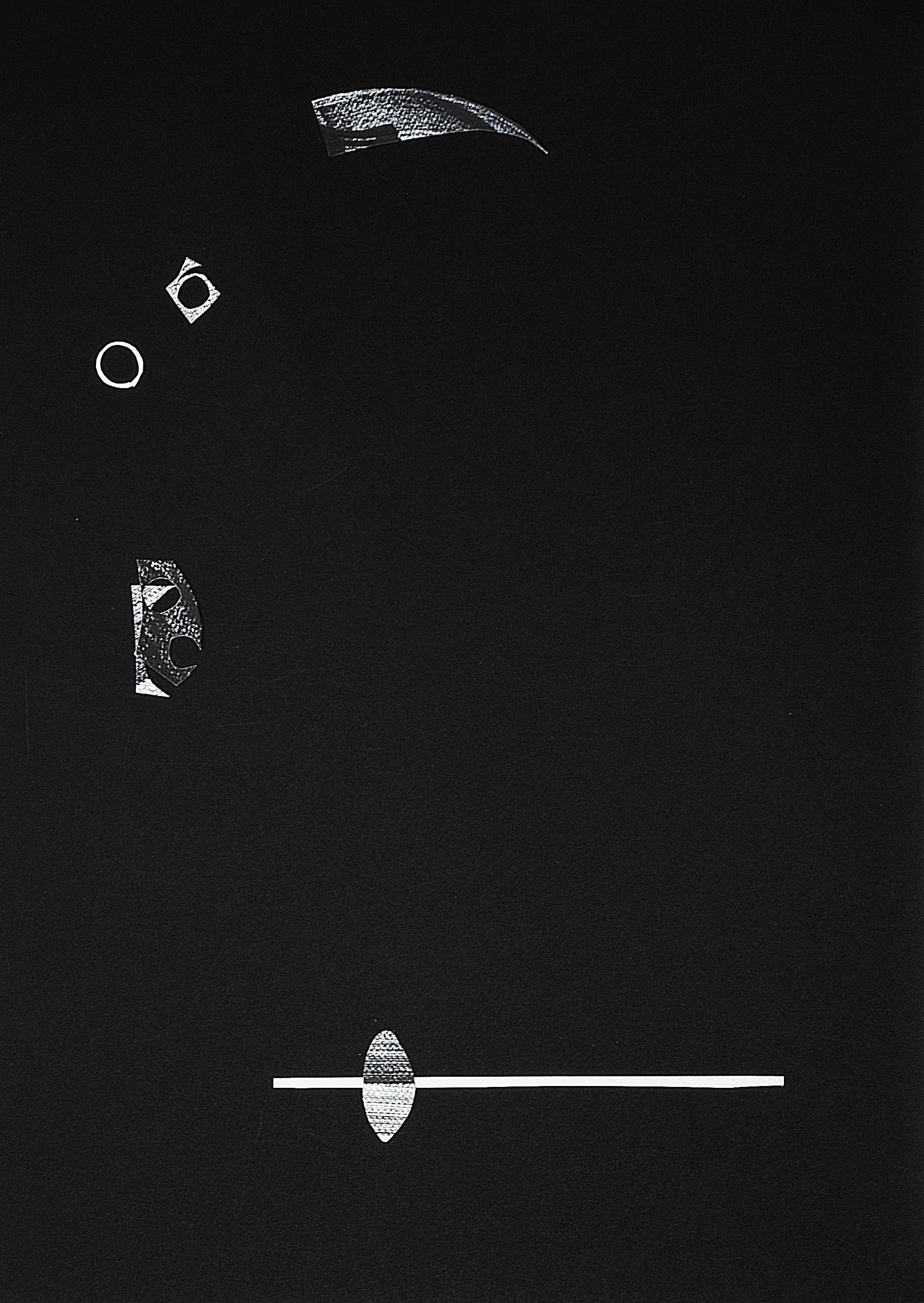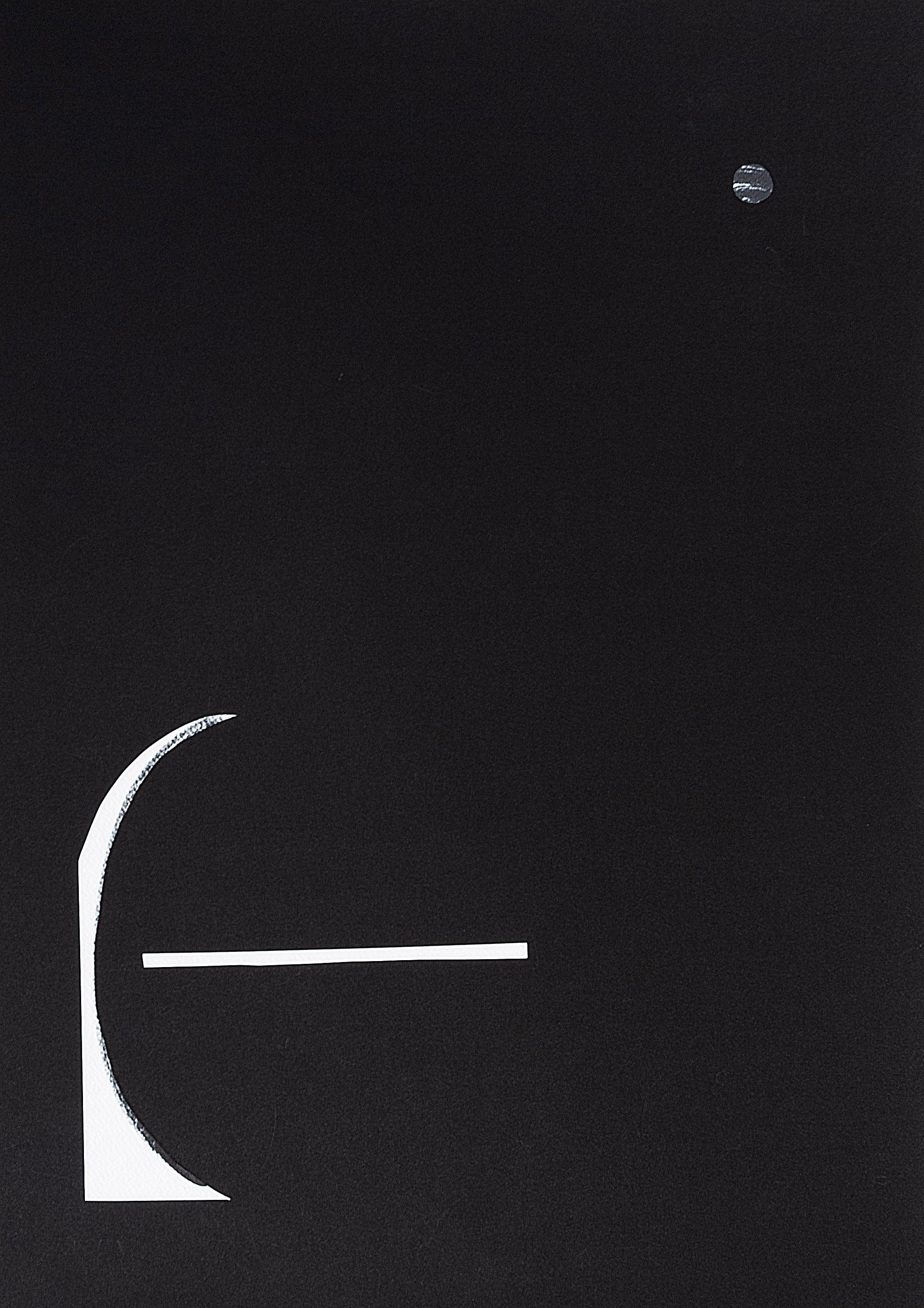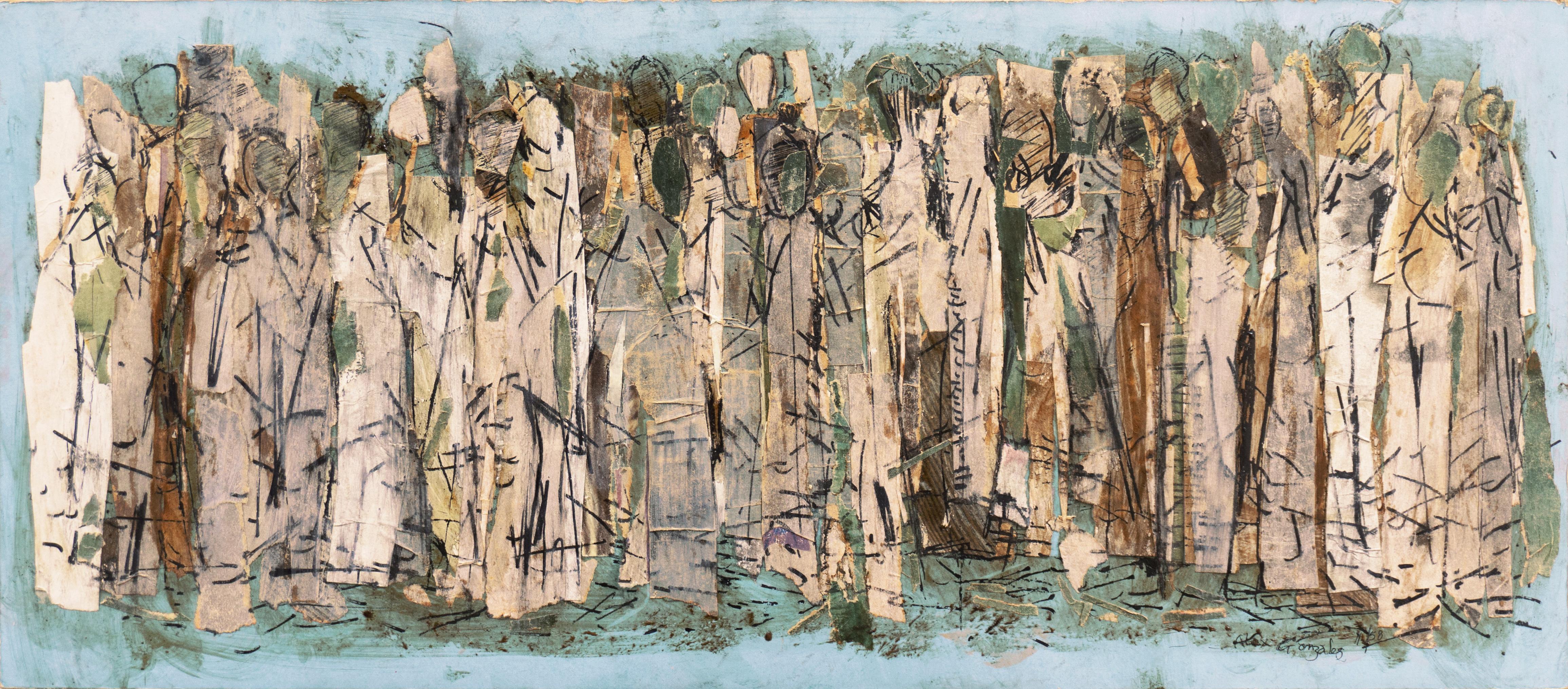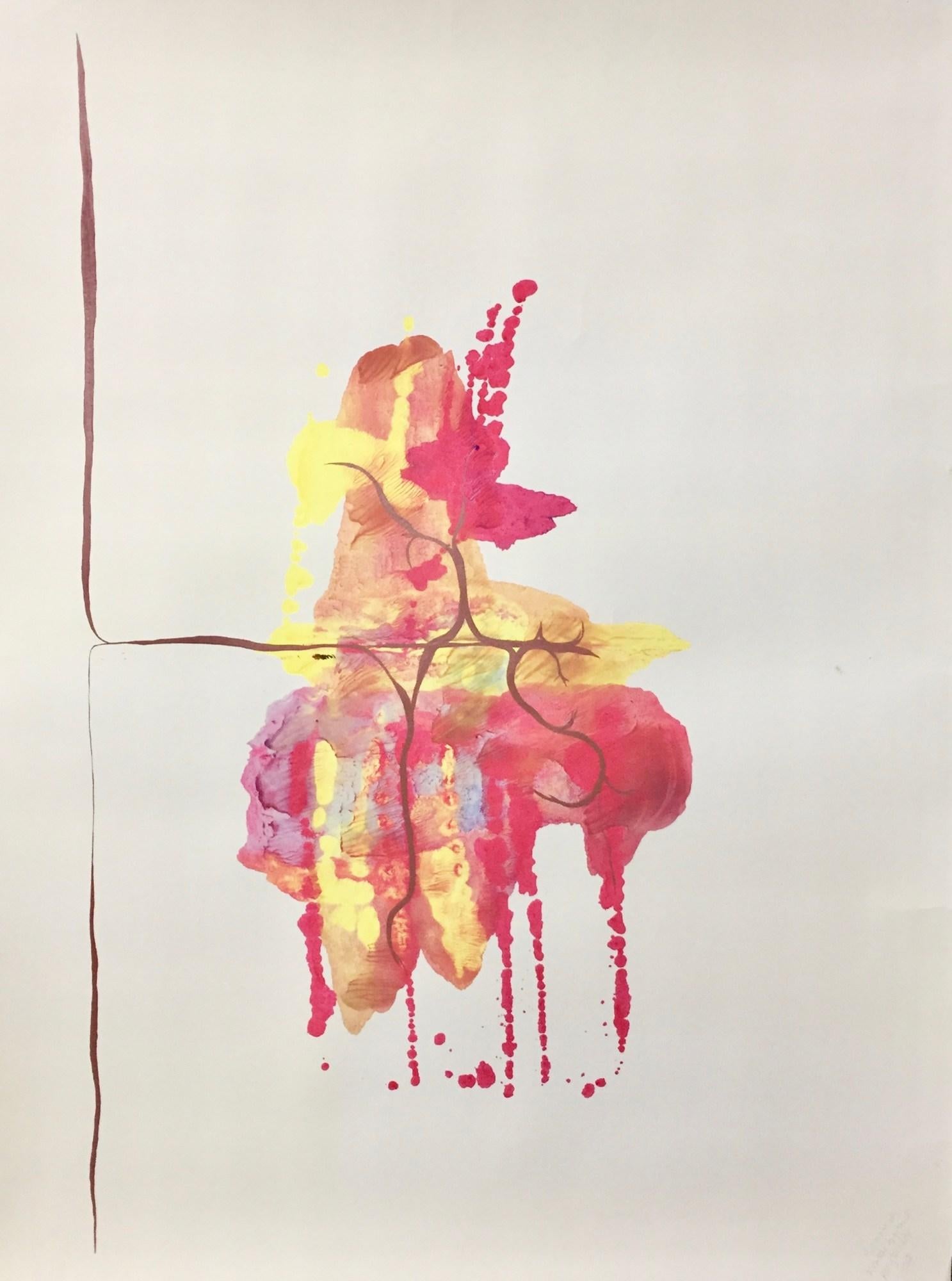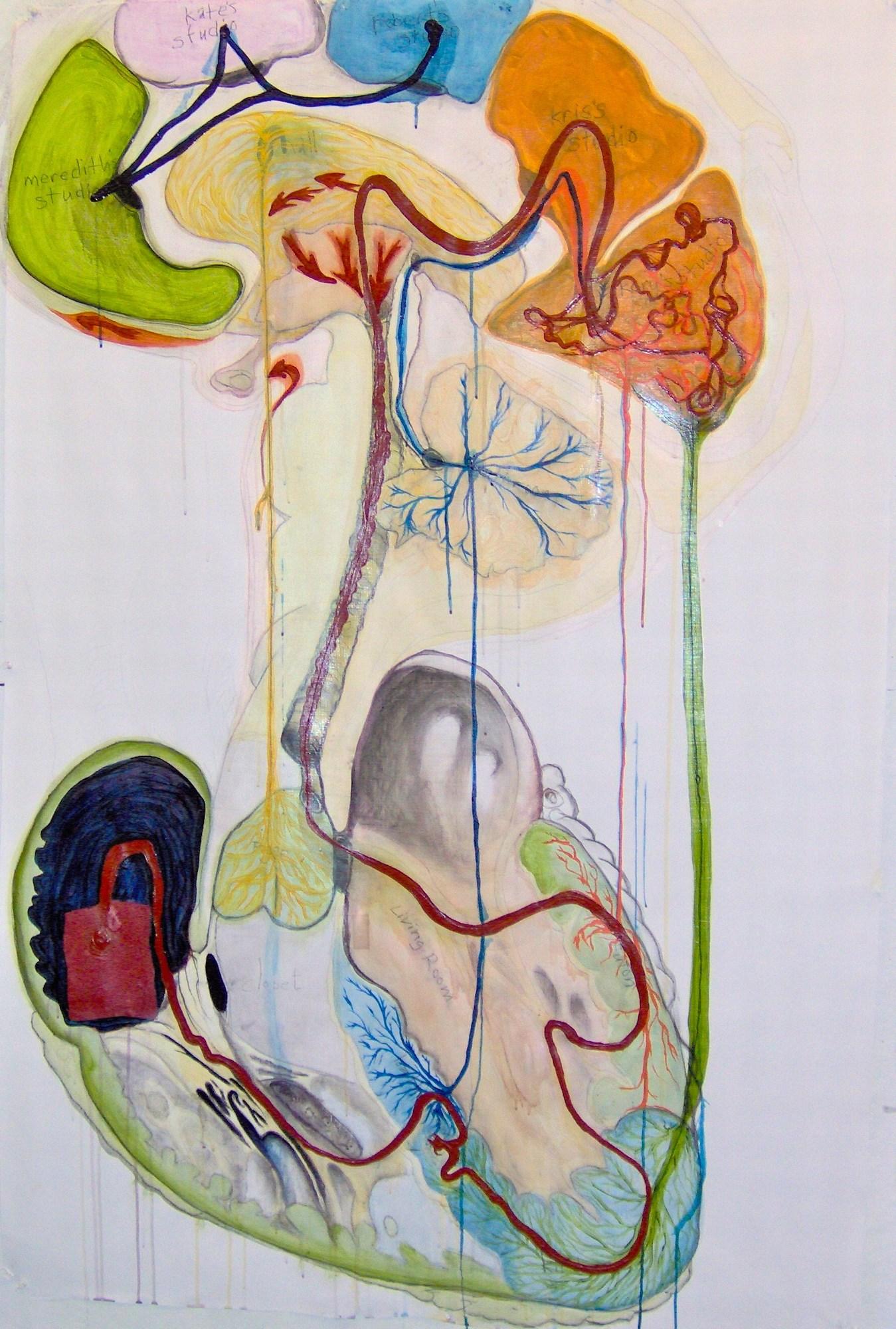David Hare"Cronus Waiting" Mixed Media on Board Black and White Composition by David Hare
About the Item
- Creator:David Hare (1917-1992, American)
- Dimensions:Height: 36 in (91.44 cm)Width: 27.25 in (69.22 cm)
- More Editions & Sizes:UniquePrice: $20,000
- Medium:
- Movement & Style:
- Period:
- Condition:
- Gallery Location:New York, NY
- Reference Number:1stDibs: LU1841214419182
David Hare
David Hare, a surrealist and Abstract Expressionist sculptor and photographer, was born in New York City on March 10, 1917. From 1936–37, he studied biology and chemistry at Bard College in Annandale-on-Hudson, New York. Hare had no formal training in art but began experimenting. He took up photography in the 1930s and by the end of the decade was working in color. The Walker Galleries in New York exhibited his photographs in 1939. From 1941–44, Hare founded and edited the surrealist magazine VVV with André Breton, Marcel Duchamp and Max Ernst. Peggy Guggenheim presented solo shows of Hare's work in her The Art of This Century Gallery from 1944–47. In 1948, he was a founding member, together with William Baziotes, Robert Motherwell and Mark Rothko, of The Subjects of the Artist school in New York and Hare, became friendly with Jean-Paul Sarte. Hare died on December 21, 1992, in Jackson.
- ShippingRetrieving quote...Ships From: New York, NY
- Return PolicyA return for this item may be initiated within 3 days of delivery.
- "Cronus Dining (Night)" Abstract Acrylic and Ink on Board Painting by David HareBy David HareLocated in New York, NYDavid Hare Cronus Dining (Night), 1971 Acrylic, ink, paper collage on paper on board 39 1/2 x 29 5/8 inches “Freedom is what we want,” David Hare boldly stated in 1965, but then he ...Category
1970s Abstract Abstract Paintings
MaterialsInk, Acrylic, Board
- "Cronus Asleep in the Cave" Mixed Media Work on Paper by David HareBy David HareLocated in New York, NYDavid Hare Cronus Asleep in the Cave, 1991 Acrylic on paper on board 26 X 34 1/4 inches “Freedom is what we want,” David Hare boldly stated in 1965, but then he added the caveat, “a...Category
1990s Abstract Mixed Media
MaterialsPaper, Acrylic, Board
- "Cronus Asleep in the Cave" Mixed Media Work on Paper by David HareBy David HareLocated in New York, NYDavid Hare Cronus Asleep in the Cave, 1971 Acrylic, ink wash, graphite, paper collage on paper on board 26 x 35 inches “Freedom is what we want,” David Hare boldly stated in 1965, b...Category
1970s Abstract Abstract Paintings
MaterialsAcrylic, Paper, Ink, Graphite
- "Cronus View from the Cave" Abstract Mixed Media Composition by David HareBy David HareLocated in New York, NYDavid Hare Cronus View from the Cave, 1971 Graphite, Ink wash, Paper Collage on Paper on Board 25 x 33 inches “Freedom is what we want,” David Hare boldly stated in 1965, but then ...Category
1970s Abstract Abstract Paintings
MaterialsPaper, Ink, Graphite
- "Composition with Figure, " Irene Rice PereiraBy Irene Rice PereiraLocated in New York, NYIrene Rice Pereira Composition with Figure, 1951 Inscribed, signed and dated Salford/Pereira 2/51 (lr); inscribed I Rice Pereira/2669 Great Clowes St/Sa...Category
1950s Abstract Abstract Paintings
MaterialsPaper, India Ink, Casein
- "Harvard vs Yale" Charles Green Shaw, Football, Ivy League Sports, AbstractBy Charles Green ShawLocated in New York, NYCharles Green Shaw Harvard vs. Yale, 1944 Signed and dated on the reverse Oil on canvasboard 9 x 12 inches Provenance: Harvey and Francois Rambach, New Jersey Private Collection, California Washburn Gallery, New York D. Wigmore Fine Art, New York Private Collection, New York Charles Green Shaw, born into a wealthy New York family, began painting when he was in his mid-thirties. A 1914 graduate of Yale, Shaw also completed a year of architectural studies at Columbia University. During the 1920s Shaw enjoyed a successful career as a freelance writer for The New Yorker, Smart Set and Vanity Fair, chronicling the life of the theater and café society. In addition to penning insightful articles, Shaw was a poet, novelist and journalist. In 1927 he began to take a serious interest in art and attended Thomas Hart Benton's class at the Art Students League briefly in New York. He also studied privately with George Luks, who became a good friend. Once he had dedicated himself to non-traditional painting, Shaw's writing ability made him a potent defender of abstract art. After initial study with Benton and Luks, Shaw continued his artistic education in Paris by visiting numerous museums and galleries. From 1930 to 1932 Shaw's paintings evolved from a style imitative of Cubism to one directly inspired by it, though simplified and more purely geometric. Returning to the United States in 1933, Shaw began a series of abstracted cityscapes of skyscrapers he called Manhattan Motifs which evolved into his most famous works, the shaped canvases he called Plastic Polygons. The 1930s were productive years for Shaw. He showed his paintings in numerous group exhibitions, both in New York and abroad, and was also given several one-man exhibitions. Shaw had his first one-man exhibition at the Valentine Dudensing Gallery in New York in 1934, which included 25 Manhattan Motif paintings and 8 abstract works. In the spring of 1935 Shaw was introduced to Albert Gallatin and George L.K. Morris. Gallatin was so impressed with Shaw's work, he broke a policy against solo exhibitions at his museum, the Gallery of Living Art, and offered Shaw an exhibition there. In the summer of 1935 Shaw traveled to Paris with Gallatin and Morris who provided introductions to many great painters. Shaw regularly spent time with John Ferren and Jean Hélion. The following year Gallatin organized an exhibition called Five Contemporary American Concretionists at the Reinhardt Gallery that included Shaw, Ferren, and Morris, Alexander Calder, and Charles Biederman...Category
1940s Abstract Geometric Landscape Paintings
MaterialsOil, Board
- "The Black Series number two", by Anna Pennati - collage on cardboard on canvasLocated in Milano, MIWe are pleased to present this event, which will see the exclusive world premiere of Anna Pennati's works entitled The Black Series, that the artist reserved exclusively for 1stDibs ...Category
2010s Abstract Mixed Media
MaterialsCanvas, Paper, Ink, Cardboard
- "The Black Series number one", by Anna Pennati - collage on cardboard on canvasLocated in Milano, MIWe are pleased to present this event, which will see the exclusive world premiere of Anna Pennati's works entitled The Black Series, that the artist reserved exclusively for 1stDibs ...Category
2010s Abstract Mixed Media
MaterialsCanvas, Paper, Ink, Cardboard
- 'Abstracted Figural', Carmel Art Association, San Francisco Art InstituteLocated in Santa Cruz, CASigned lower right, 'Alex Gonzales' (American, 1927-2020) and dated, '11/58'. A delicate and enigmatic, mid-century, painted collage showing a processio...Category
1950s Abstract Expressionist Mixed Media
MaterialsIllustration Board, Resin, Paper, India Ink, Magazine Paper
- California Monoprint Apartment BiogramBy Kory TwaddleLocated in Kansas City, MOArtist : Kory Twaddle Title : California Monoprint Apartment Biogram Materials : Tempera and acrylic monoprint on paper Date : 2008 Dimensions : 52 x 42 x 0.1 inches Kory Twaddle ...Category
2010s Abstract Mixed Media
MaterialsPaint, Paper, Conté, Charcoal, India Ink, Acrylic, Tempera, Watercolor, ...
- Organ BuildingsBy Kory TwaddleLocated in Kansas City, MOArtist : Kory Twaddle Title : Organ Buildings Materials : Oil, acrylic, charcoal, conté crayon, marker, string, hair, postage stamps, buttoms, and mixed media on paper mounted on pa...Category
Early 2000s Abstract Impressionist Mixed Media
MaterialsGraphite, Monoprint, Paint, Paper, Conté, Charcoal, India Ink, Acrylic, ...
- Third Floor SystemsBy Kory TwaddleLocated in Kansas City, MOArtist : Kory Twaddle Title : Third Floor Systems Materials : Acrylic, tempera, gouache, glitter, paint brushes, and mixed media on drawing pad cardboard back with spiral Date : 201...Category
2010s Abstract Mixed Media
MaterialsPencil, Graphite, Color Pencil, Paint, Newsprint, Cardboard, Watercolor,...
